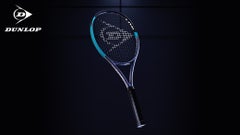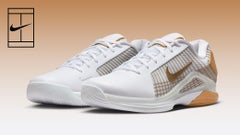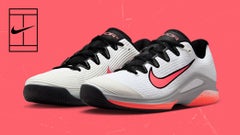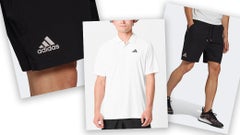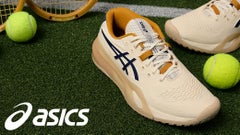Sun protection explained
If protecting your skin isn't already a top priority, it's time to make it one. No matter how long you're outside it's important to limit the amount of exposure your skin gets from the sun's harmful rays. While you can do so by applying sunscreen frequently, you can take sun protection a step further with UPF apparel.
Many athletic clothes today feature UPF ratings, which are very similar to SPF ratings. Below, we'll explain the differences between of each type of sun protection so you have a better understanding of how to keep your skin safe and healthy.
The Basics: UPF vs. SPF
UPF (Ultraviolet Protection Factor) relates specifically to fabric. It's a rating based on the protection against both UVA and UVB rays. Whereas SPF (Sun Protection Factor) is a rating just for the protection of UVB rays. So not only is UPF protection generally more effective because it also blocks UVA radiation, but it's also easier to apply. All you have to do is wear the clothing!
Dive Deeper: Types of UV Rays
There are three types of ultraviolet (UV) radiation, UVA, UVB and UVC, which are classified according to the size of their ray's wavelength. While shorter wavelengths are more damaging to our bodies, it's also good to know that shorter UV rays are also less able to penetrate the skin.
UVA
UVA radiation is the longest type of wavelength, meaning it can penetrate the skin the deepest. UVA rays can pass through the skin's first two layers, the skin surface and epidermis, and reach the dermis which is the skinÍs thickest layer. It can impact skin during any hour of the daylight and can penetrate through clouds, as well as untreated glass. Exposure to UVA radiation causes premature skin aging, wrinkling and potentially skin cancer. (Length: 320-400 nanometers)
UVB
These medium-wavelengths can't penetrate the skin's surface layers, however, UVB rays can still reach our skin. Exposure to UVB radiation causes sunburns and delayed tanning. Like UVA radiation, they also contribute to premature skin aging, wrinkling and the development of skin cancer. The highest impact of UVB is generally between 10am and 4pm, but the intensity can vary by location and season. UVB radiation can also penetrate clouds, but not glass. (Length: 290-320 nanometers)
UVC
UVC rays are the most harmful type of radiation. Luckily for us though, it's absorbed by the atmosphere before it reaches the earth's surface. (Length: 200-290 nanometers)

The Rating System
Laboratories determine UPF ratings based on how effectively an article of clothing can block the sun. The percentage of UV rays that passes through the fabric is converted to a fraction so that one unit equates to the percentage amount. For example, a UPF rating of 30 only allows 1/30 (3.3%) of UV radiation to pass through. The higher the UPF rating, the greater the protection the fabric provides. The ratings can also be categorized into three protection levels, which are listed in the chart below:

It's also good to keep in mind the highest UPF rating an article of clothing can have is 50+. If a garment allows less than 2% of UV radiation to pass through, it will be labeled UPF 50+ and nothing higher.
Influencing Factors
There are several factors that can influence the effectiveness of a fabric's ability to block UV rays. These factors include:
- Composition: Synthetic materials, such as Polyester and Nylon, generally provide better protection compared to untreated and natural materials, like cotton.
- Construction and Weave: The most effective type of UV protection is tighter weaves and dense fabric. The more the fabric stretches, the less effective its UV rating may be. Heavier garments tend to offer better protection as well.
- Colour: Darker colours often provide more protection than lighter colours.
- Wetness: Moisture blocks less UV rays. So the drier the fabric, the more protective it is.
- Condition: The more faded or worn fabric is, the less effective it will be when blocking UV radiation.
The Bottomline
While you should still apply sunscreen on exposed areas of the body, UPF protective clothing is an even more effective and simple way to protect your skin from UV radiation.
Shop UV Protection
Here at Tennis Warehouse, we know how often tennis players play under the sun so we've made it easy to shop for UV protected items. Be sure to take a look at our men's UPF apparel and women's UPF apparel pages, as well as sunscreen!





